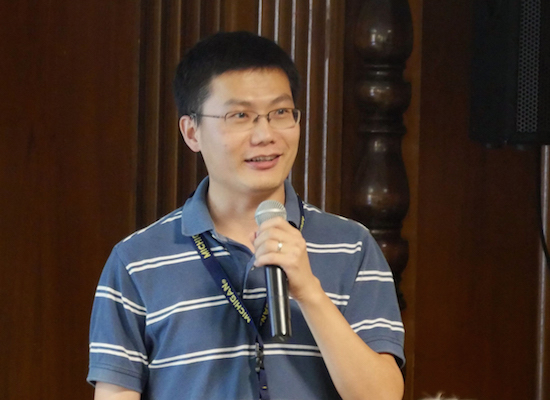CSE Seminar
Designing the Wireless Internet of Things with Ambient Awareness
Add to Google Calendar

The forthcoming decade will witness an explosion of Internet-of-Things (IoT), which incorporates not only the current mobile devices, but also smart everyday objects equipped with computation, communication and sensing capabilities. IoT will automate human life through a new wave of applications, such as smart buildings, intelligent connected vehicles, 3D user interfaces, and immersive telepresence. But to reach its tipping point, IoT still needs two critical foundations: (i) wireless network architectures that can scale to billions of devices, with wire-speed connectivity and low power consumption; (ii) ubiquitous sensing mechanisms that enable the devices to be aware of micro-activities and ambient location with high precision.
My research team has been addressing both problems—We design computational models and algorithms to extract intelligence from wireless signals, thus enabling high-resolution sensing modalities and efficient network protocols. This talk will focus on several relevant systems through the lens of design, prototyping and experimentation. I will first introduce a ubiquitous sensing system that can locate IoT devices with centimeter precision, by extrapolating signals from incumbent ceiling lights. Leveraging commodity wireless interfaces, we have also realized systems that can sense human interaction with the physical world, e.g., sensing the orientation change and touching events on plain everyday objects, and tracking fingers to realize 3D in-air input. The second part of this talk will describe how our approach facilitates millimeter-wave wireless networks, whose capacity can potentially meet the IoT traffic explosion but performance becomes sensitive to the physical environment. Finally, I will summarize the common principle behind these system designs and the implications for building the future IoT infrastructures.
Xinyu Zhang is an Assistant Professor in the Department of Electrical and Computer Engineering at the University of Wisconsin-Madison. He received his Ph.D. degree in Computer Science and Engineering from the University of Michigan in 2012. His research interest lies in wireless systems and ubiquitous computing, and more specifically in (i) designing next-generation wireless architectures based on millimeter-wave, large-scale distributed antennas, and physical-layer informed protocols; (ii) designing wireless sensing systems to track micro-locations and human interactions with objects. His research work has been regularly published in top conferences in these areas, especially ACM MobiCom, MobiSys and IEEE INFOCOM. He is the recipient of ACM MobiCom Best Paper Award in 2011, and NSF CAREER award in 2014. His research has led to multiple tech transfers including two startup companies.
 MENU
MENU 
